Nadia furniture by Jin Kuramoto made using Japanese shipbuilding techniques
Stockholm 2014: this collection of wooden furniture by Japanese designer Jin Kuramoto is built using traditional techniques derived from shipbuilding (+ slideshow).
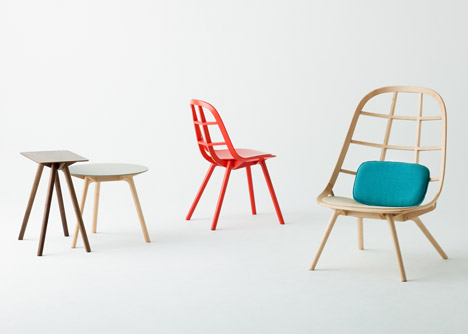
Pieces in Jin Kuramoto's Nadia range for his new brand Matsuso T are constructed using a particular interlocking technique known as kumiki.
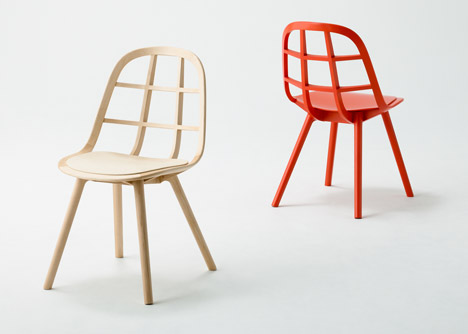
"The heritage of many of the woodworking techniques used by Japanese carpenters originates from Japanese shipwrights," said Jin Kuramoto.
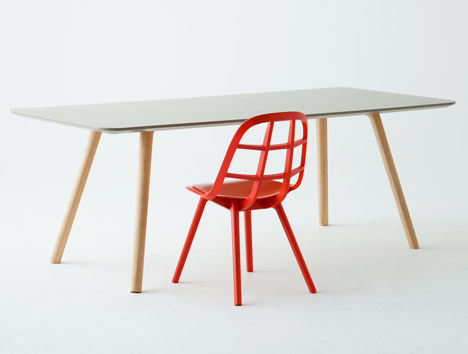
"Inherent in its position as an island nation, it is unsurprising that the maritime industry has been a driving force behind the innovation of wood construction for centuries."
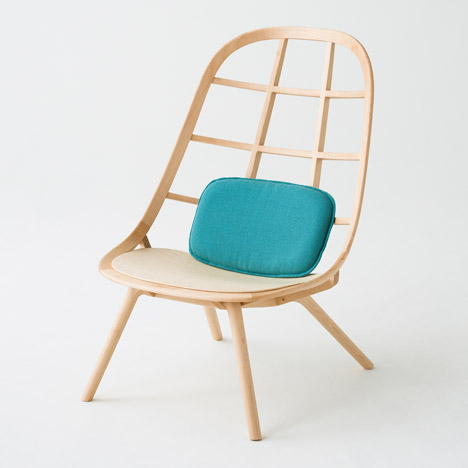
Curved sections of wood form grids for the chair backs, which flow into supports for the thinly padded seats. The chairs come in natural wood or bright red.
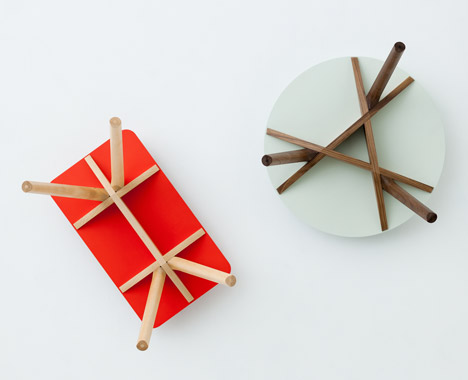
Frames of interlocked struts cross beneath the coloured table tops to support the surfaces. Rounded legs splay outward from where they join the under frames, nestled into the corners where the beams meet.
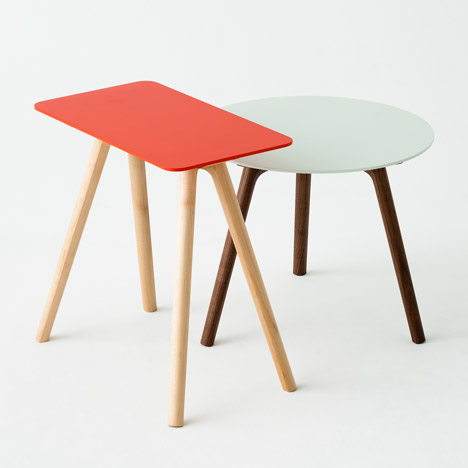
The circular tables have three legs and rectangular designs are supported on four.
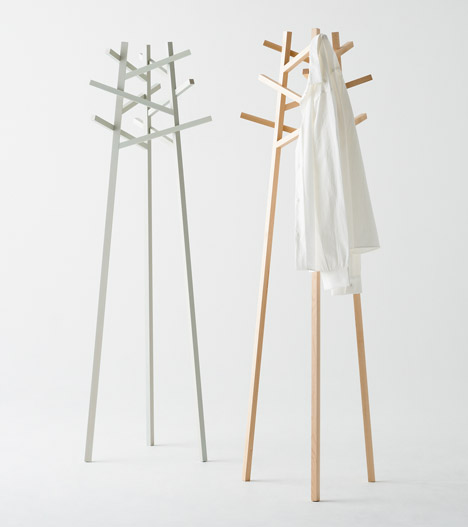
Coat stands are created using three poles with branch-like offshoots at the top that fix onto each other to make the structure sturdy. These are available in a set of light colours.
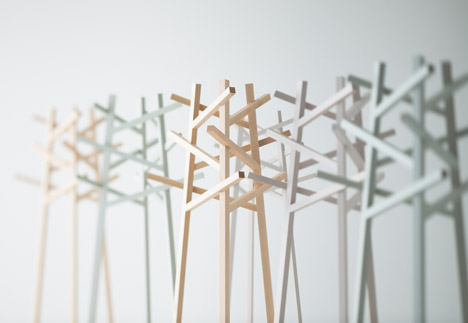
The collection will be unveiled at the Stockholm Furniture and Lighting Fair, which opens tomorrow as part of Stockholm Design Week.
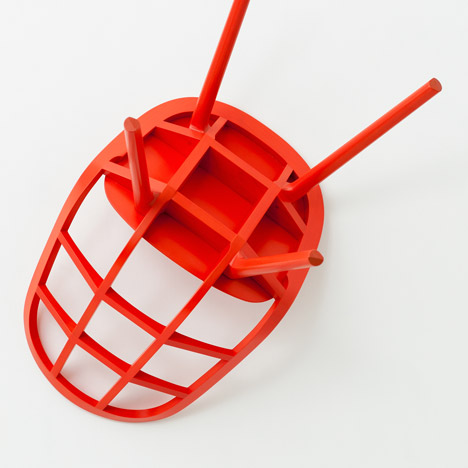
Matsuso T is also launching a range of pentagonal wooden furniture designed by Claesson Koivisto Rune.
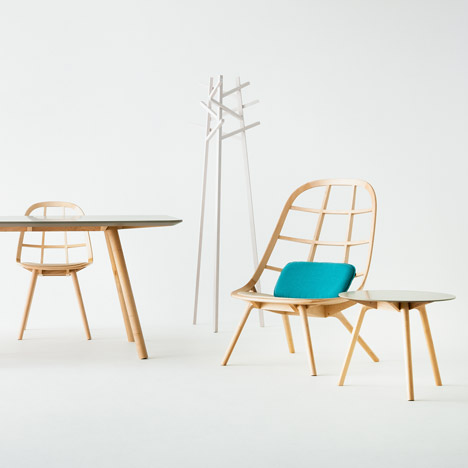
Photographs are by Takumi Ota.